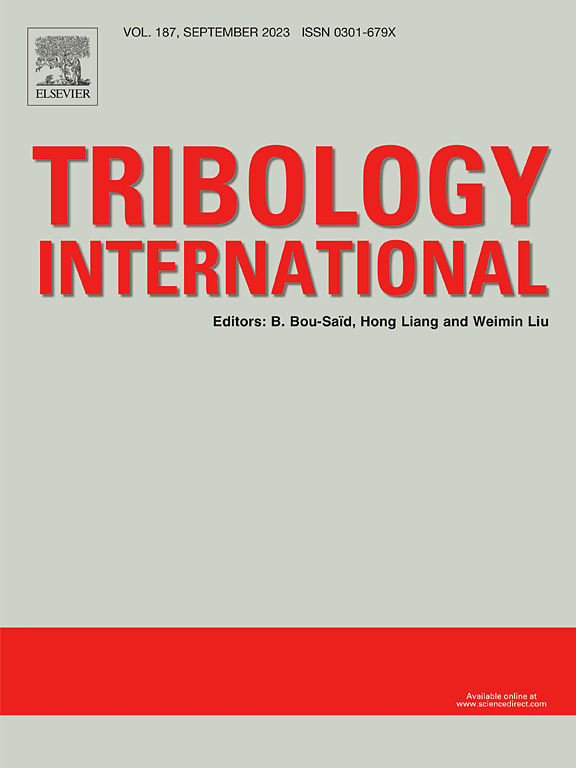Investigating lubrication capacities of novel 2D hexagonal materials by DFT simulations
IF 6.1
1区 工程技术
Q1 ENGINEERING, MECHANICAL
引用次数: 0
Abstract
The emergence of novel two-dimensional honeycomb materials offers new possibilities in tribology. In the present work, density functional theory (DFT) simulations are employed to explore the lubrication potential. The friction analysis of homojunction sliding models reveals that germanene (R180 configuration), phosphorene, and arsenene, collectively referred to as GPAene, exhibit low sliding energy barriers in comparison with those of graphene and MoS2, indicating their potential of serving as lubricants. Under the tensile strain, GPAene homojunctions show highly adjustable friction. In addition, all the heterojunctions composed of GPAene and graphene exhibit extremely low friction. However, in point contact mode, only phosphorene maintains a low friction. The simulation results provide theoretical guidance for experimental exploration and selection of new lubricating materials.
求助全文
约1分钟内获得全文
求助全文
来源期刊

Tribology International
工程技术-工程:机械
CiteScore
10.10
自引率
16.10%
发文量
627
审稿时长
35 days
期刊介绍:
Tribology is the science of rubbing surfaces and contributes to every facet of our everyday life, from live cell friction to engine lubrication and seismology. As such tribology is truly multidisciplinary and this extraordinary breadth of scientific interest is reflected in the scope of Tribology International.
Tribology International seeks to publish original research papers of the highest scientific quality to provide an archival resource for scientists from all backgrounds. Written contributions are invited reporting experimental and modelling studies both in established areas of tribology and emerging fields. Scientific topics include the physics or chemistry of tribo-surfaces, bio-tribology, surface engineering and materials, contact mechanics, nano-tribology, lubricants and hydrodynamic lubrication.
 求助内容:
求助内容: 应助结果提醒方式:
应助结果提醒方式:


